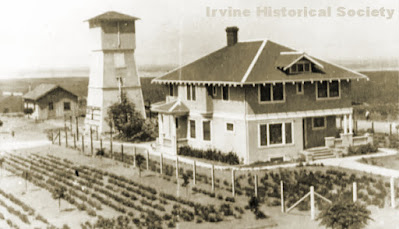 |
| Knights demonstrate battle technique at Wayzgoose, 1986. |
A: The Wayzgoose Medieval Faire, a school spirit event held every spring since 1970, was UCI's oldest tradition. Its name came from an annual celebration held for printers' apprentices in medieval England. Entertainment included magicians, jugglers, game and craft booths, music, puppeteers, Shakesperean plays and demonstrations of jousting and dueling. Everyone was encouraged to wear period costumes, and at least one Wayzgoose ended with a torch-lit banquet featuring court jesters and strolling minstrels.
The theme, however, began to slowly erode in the 1990s. In 2012, Wayzgoose was officially un-medieval-ifed and given a new eco-friendly theme: "Zero Waste." One assumes such exciting themes as "Oral Hygiene" and "Paint Drying" were already snapped up by other festivals.
By 2017, even this neutered version of Wayzgoose was dropped from the "Celebrate UCI" open house event of which it had once been a part.
Q: Other than the library, where can I get my Lord of the Rings fix in O.C.?
A: Want to visit Gandalf, Bilbo Baggins, and their friends? Just take Ring Road to Middle Earth,… in Irvine!
In 1974, UCI’s students voted to name the new dorms "Middle Earth.” Each building is named for a character from J.R.R. Tolkien's The Hobbit or Lord of the Rings trilogy -- which had gained greater followings in the 1970s -- and the halls are mostly named for places mentioned in the books, like Mirkwood or Rohan. Middle Earth has grown to twenty-four residence halls, two dining facilities called Brandywine and Pippin Commons, the Bucklebury Library, the Helms Deep Fitness Center, and more. (Back in the 1990s, even UCI’s email servers had Tolkien-related names.)
Sadly, there’s no actual Middle Earth theming to be found on campus aside from the names. UCI should hire Disney’s Imagineers to make it look less like Irvine and more like the Shire (or Mordor, depending on how you see Irvine).
Q: Why does UCI have an anteater as their mascot?
A: In 1965, students were thumbing their noses at convention and authority. Marches were held, draft cards were burned, and UC Santa Cruz's sports teams started playing as the Banana Slugs.
When students at the new UC Irvine voted to select a mascot, student leaders eschewed fiercer options and lobbied hard (and campaigned at polling places) for the anteater.
This strange looking critter was on the ballot thanks to two UCI water polo players, Pat Glasgow and Bob Ernst, who'd been inspired by an anteater in the comic strip “B.C.” The cartoon anteater made a “ZOT!” noise when snarfing up ants with its long tongue – a noise which remains UCI’s unlikely battle cry to this day (along with “Give ‘em tongue!”). Administrators wrongly assumed the mascot, chosen in a rigged election, would fade away.
One thing’s sure: Today’s Irvine of beige stucco and HOAs would never do something this silly and fun again.




%20b.jpg)







